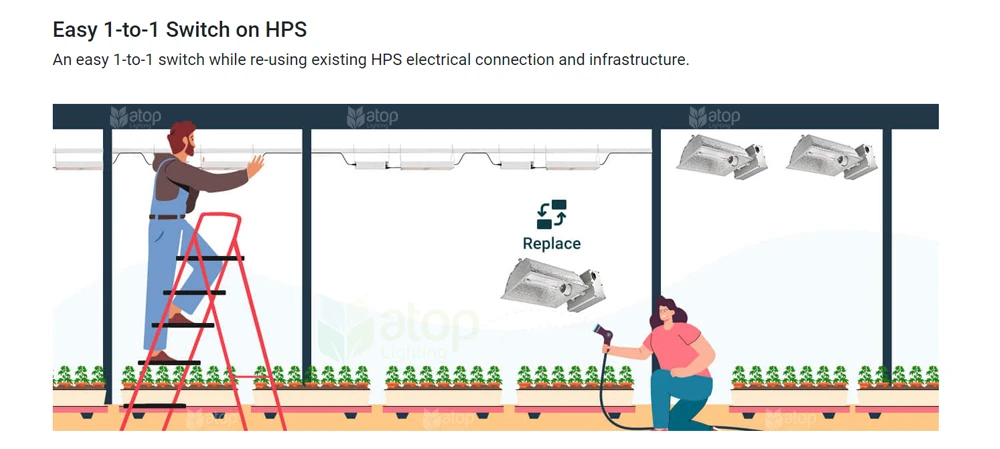How Much Power Do LED Grow Lights Really Use
Are your indoor spaces lacking in natural sunlight? LED grow lights can be an excellent solution for your indoor grow rooms. These lights can either supplement existing sunlight or serve as the primary light source for your indoor plants. Known for their efficiency and effectiveness, LED grow lights have surged in popularity among gardening enthusiasts and professional growers.
However, as more people adopt LED grow lights, a common question arises: How much electricity do LED grow lights actually consume, and what impact will they have on your energy bills.
In this blog post, we will explore various factors that influence power usage and provide practical tips for measuring and reducing your energy consumption. By understanding these aspects, you can make informed decisions about using LED grow lights.
How to calculate power consumption
Calculating the power consumption of LED grow lights is not difficult. To determine energy usage, you need three key pieces of information: the wattage of your grow lights, how long they run each day, and the duration of use. If you're interested in estimating electricity costs, you'll also need to know your electricity supplier's rate per kilowatt-hour (kWh).
The basic formula for power consumption is:
Power consumption = Actual power of the light × Hours of operation per day
Let's use our 400W Horti-Top LED grow light as an example. As of January 2024, the average electricity cost in California is 19.9 cents per kWh (approximately $0.199). Assuming the Horti-Top runs for 12 hours a day in California:
Daily power consumption: 400W × 12 hours = 4.8 kWh
Daily cost: $0.199 × 4.8 kWh = $0.96
Monthly cost: $0.96 × 30 days = $28.80
This simple calculation helps you estimate the energy consumption and associated costs of running your LED grow lights. Keep in mind that actual costs may vary depending on your specific electricity rates and usage patterns.
LED vs traditional grow lights
Are LED grow lights truly more efficient than traditional grow lights? Let's explore this question by comparing two specific examples: an 800W Horti-Top LED grow light and a 1000W HPS (High-Pressure Sodium) light.
The Horti-Top is an innovative top lighting solution designed to replace traditional HPS lighting on a 1:1 basis.

For this comparison, we'll assume both lights are operated for 12 hours a day in identical conditions.
Energy consumption breakdown:
- 800W Horti-Top LED: 0.8 kW × 12 hours = 9.6 kWh per day
- 1000W HPS light: 1 kW × 12 hours = 12 kWh per day
As we can see, the HPS light consumes 2.4 kWh more power than the LED grow light daily. Over a 30-day period, this difference adds up to a substantial 72 kWh.
To put this into perspective, assuming an average electricity cost of $0.20 per kWh, the HPS light would cost approximately $14 more to operate each month. This demonstrates that LED grow lights can indeed be more energy-efficient and cost-effective in the long run.

Factors affecting power consumption
There are several factors that influence power consumption of LED grow lights, impacting both your energy and the efficiency of your indoor garden.
Wattage is the primary factor. Higher wattage typically means more power consumption. But it is important to know the difference between LED watts and true watts. LED watts are the amount of power used by LED chips in the fixture. They are normally the watts indicated by lighting manufacturers. The true watts, are the actual power drawn by the fixture, which is the usable light output. A high-quality LED grow light has high efficiency rating, which means it can convert more energy used by LED chips into usable light.
The efficiency of the LED grow lights, measured in lumens per watt, determines how much light is produced per unit of power consumed. High-efficiency LEDs provide more light with less power, making them a cost-effective choice.
The lighting schedule is another critical factor. While LEDs are efficient, running them for extended periods will increase overall consumption. The implement of dynamic lighting schedules that mimic natural light cycles is an effective way to optimize energy use while providing sufficient lighting for plants.
Optimize power usage for maximum efficiency
Now that you understand the factors influencing your LED grow light's power consumption, it's time to harness that knowledge for maximum efficiency.
Invest in high-quality LED grow lights
While the initial cost might be higher, high-quality LED grow lights often offer superior efficiency and longevity, saving you money in the long run. Additionally, these lights have high true watts, which means they convert more energy to produce useful light.
Proper light placement
Proper positioning of your LED grow lights can significantly enhance their efficiency. Ensure the lights are at the optimal distance from your plants to maximize light absorption and minimize energy waste. Too close, and you risk burning the plants; too far, and the light intensity diminishes, leading to inefficient power use.
Dynamic lighting schedule
Dynamic lighting ensures you only provide light for your plants when they are needed. With dimmable light intensity and variable light spectrum, you can match the specific light requirements of your plant’s growth stages, ensuring they receive the light amount without wasting energy.

